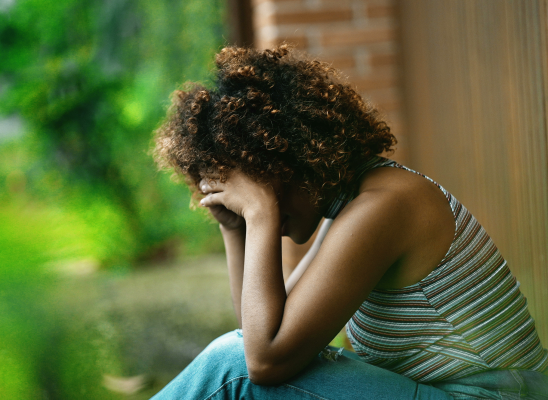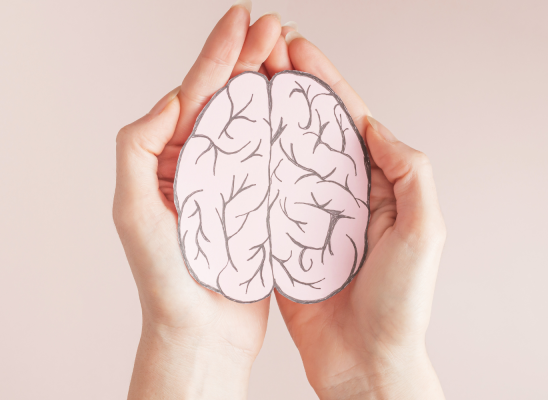Recognizing the Early Signs of Trichotillomania

Online test
Find out the severity of your symptoms with this free online test
Trichotillomania, commonly known as hair pulling or simply "trich", is a body-focused repetitive behavior (BFRB) characterized by repetitive hair pulling that can result in noticeable hair loss, significant emotional distress, and difficulty functioning in daily life. It’s not just a bad habit of pulling or twirling one’s hair, nor is it a dermatological disorder, although dermatologists are sometimes the first contact when someone is dealing with hair loss, especially if they are unsure of the cause.
Trich can be tricky to recognize, especially in its early stages. Hair pulling comes on gradually, and what starts as seemingly harmless twirling, pulling or tugging can evolve over time into compulsive hair pulling that becomes hard to control. While it typically emerges in late childhood or early adolescence, trich can develop at any age.
Noticing the loss of hair can be difficult too. The scalp, eyebrows and eyelashes are typically the most common site for hair pulling, especially in women. However, some people pull from their arms, legs, or pubic area. Men often pull from their beard or chest. Not surprisingly, trich tends to look a little different in children than in adults.
So, observing hair loss isn’t always easy but other signs may alert you to something happening.
Early Signs in Children
Children with emerging trich may show subtle signs that are often overlooked or attributed to other causes. Some early signs to be aware of include:
Physical Indicators
- Areas of thin, patchy, or missing hair particularly around the crown or temples, eyebrows, or eyelashes
- Irregular patches of hair with varying lengths or broken hairs
- Unexplained GI issues. This requires medical evaluation due to potential trichophagia (ingesting pulled hair).
Of course, it’s important to note that hair loss in children can sometimes be due to a medical condition and it is important to address any hair loss with their pediatrician.
Behavioral Changes
- Children may begin avoiding activities like haircuts, styling, or hair washing
- They may suddenly start wearing hats or headbands, or suddenly change the style of their hair trying to mask hair loss
- They may develop rituals around hair pulling such as twisting or twirling hair, biting, chewing, playing with or even saving their pulled hair.
- While rare, a person ingests their pulled hair in a behavior known as trichophagia. This is a concerning behavior that can lead to serious medical consequences due to the hair causing GI blockages known as trichobezoars.
Emotional Responses
Children often reveal their feelings in behavior rather than words. Some signs of emotional distress might include:
- Increased anxiety, particularly around hair care, grooming, etc.
- Increased isolation or avoidance of certain activities, especially those that might call attention to their hair loss
- Increased secrecy about their behaviors
- Experience low self-esteem, feelings of shame, guilt, or embarrassment, anxiety or depression.
Early Signs in Adults
Adult-onset trichotillomania, while less common, presents its own unique patterns. Some of these patterns are similar to those in children but may be more complex.
Physical Signs
- Areas of thinning, patchy, or missing eyelashes, eyebrows, or scalp hair particularly around the crown or temples,
- Irregular patches of hair with varying lengths or broken hair
- In men, beards or chest hair may be sparse or patchy
Behavioral Signs
- Adults may avoid situations like visiting a hair salon or being physically close to someone who might notice their hair loss
- They may devise elaborate routines to conceal their hair pulling and be quite skilled at concealing their hair loss with wigs, hair extensions, or make up.
- Adults also tend to engage in rituals around their hair pulling such as examining pulled hairs, playing with, biting, or even saving their pulled hair.
- Avoidance of social situations
Emotional Responses
Adults have a larger circle to navigate when it comes to managing hair loss. They may:
- Avoid intimate relationships for fear of having to reveal their hair loss
- Experience increased stress and anxiety in professional situations
- Experience feelings of isolation, loneliness, or shame
- Experience other mental health issues such as depression or anxiety
"Baby Trich": The Earliest Stages
Hair pulling can even happen with little ones. Pediatric trichotillomania, often referred to as baby trich, refers to trich that emerges in infancy and in very young children. Just why babies and toddlers pull their hair isn’t exactly clear. It is thought that the behavior, at least in very young children, is largely sensory in nature and meant to self-soothe, not unlike thumb sucking.
Research suggests a link between baby trich and early childhood psychosocial stressors that can include:
- Divorce or loss of a parent
- parental mental illness
- attachment or separation issues
- birth of a sibling
- Sudden changes like moving or starting pre-school
Babies hands are everywhere so how can you recognize hair pulling?
Key indicators of baby trich can include:
- Increased hair touching or twirling
- Distracted pulling while doing other things like watching TV or settling for a nap
- Increased concern about hairs that "don't feel right."
- New patches of sparse or missing hair
Seeking Help
Of course, hair loss can happen for reasons other than pulling so it’s important to check in with your medical provider, especially for little ones who may not be able to articulate what they’re experiencing.
If trich is suspected, the good news is that there is help and there is hope. Treatment approaches like Cognitive Behavioral Therapy (CBT), Acceptance and Commitment Therapy (ACT), and Habit Reversal Training (HRT) have shown excellent results. A skilled mental health professional can help you with a plan for healing and recovery.
Recognizing the early signs of trichotillomania is the first step toward healing and recovery. At TrichStop, we have a team of therapists experienced in treating BFRBs like trich. They are ready to help you or your loved one take the next step towards healing. With support, understanding, and professional guidance, recovery is possible.
References
1. Christenson, G. A., MacKenzie, T. B., & Mitchell, J. E. (1994). Adult men and women with trichotillomania. A comparison of male and female characteristics. Psychosomatics, 35(2), 142–149. https://pubmed.ncbi.nlm.nih.gov/8171173/
2. American Academy of Child and Adolescent Psychiatry. (n.d.). Hair pulling (Trichotillomania). Retrieved from https://www.aacap.org/AACAP/Families_and_Youth/Facts_for_Families/FFF-Guide/Hair-Pulling-_Trichotillomania_-096.aspx
3. Falcao, M., Magalhaes, P., Sa, T., Liz, M., Lopes, A. F., Antunes, M., Silva, A. F., & Martins, V. (2023). Baby trich: the role of psychosocial stressors in pediatric trichotillomania. Nascer e Crescer - Birth and Growth Medical Journal, 32(1). file:///C:/Users/drdaw/Downloads/Baby_trich_the_role_of_psychosocial_stressors_in_p.pdf
Online test
Find out the severity of your symptoms with this free online test
Start your journey with TrichStop
Take control of your life and find freedom from hair pulling through professional therapy and evidence-based behavioral techniques.
Start Now



